Being a hiking lover, I know how important it is to have good and reliable equipment. It is one of the things that will help you to be protected and at ease when you’re outside. The jacket is the other important component, serving as a safety precaution to keep you protected from weather elements. We will examine 10 types of hiking jackets in this article. We’ll have a discussion on how choosing the right one can be a key element to a great hiking trip.
A right hiking jacket should be chosen. The right jacket is a source of happiness, security and good feelings during the hike. From the warmest down jacket to the lightest synthetic jacket, all jackets are equipped with different features that are specifically designed for different climates, levels of activity, and personal choices. Knowing the features of jackets is what helps hikers decide on the best jacket that will be suitable for them in their natural environment.
Table of Contents
The Basic Principles of Layering for Hiking
Understanding the 3-Layer System
Three-layer system is the main feature of outdoor activities.
- Base Layer: This is the layer that is the closest to the skin and it is the one that keeps the moisture. It is the one that transfers the perspiration to the outside to keep you dry.
- Middle Layer: It is this layer that ensures the body is not losing its heat thus maintaining the body temperature.
- Outer Layer: This is the shell layer which protects against the wind, rain, or snow but still allows the heat and sweat to go out.
How Proper Layering Enhances Outdoor Experience
The layering technique is another important tip that hikers should know. It helps hikers to adjust their clothes according to the weather and conditions. This will allow us to manage body heat, keep us dry and be comfortable from the beginning to the end of the hike. This therefore makes the outdoor activity more enjoyable and secure. The arrangement of clothes in layers is the key to dealing with weather changes with more ease. This helps avoid overheating or coldness which might cause fatigue and discomfort very quickly while hiking.
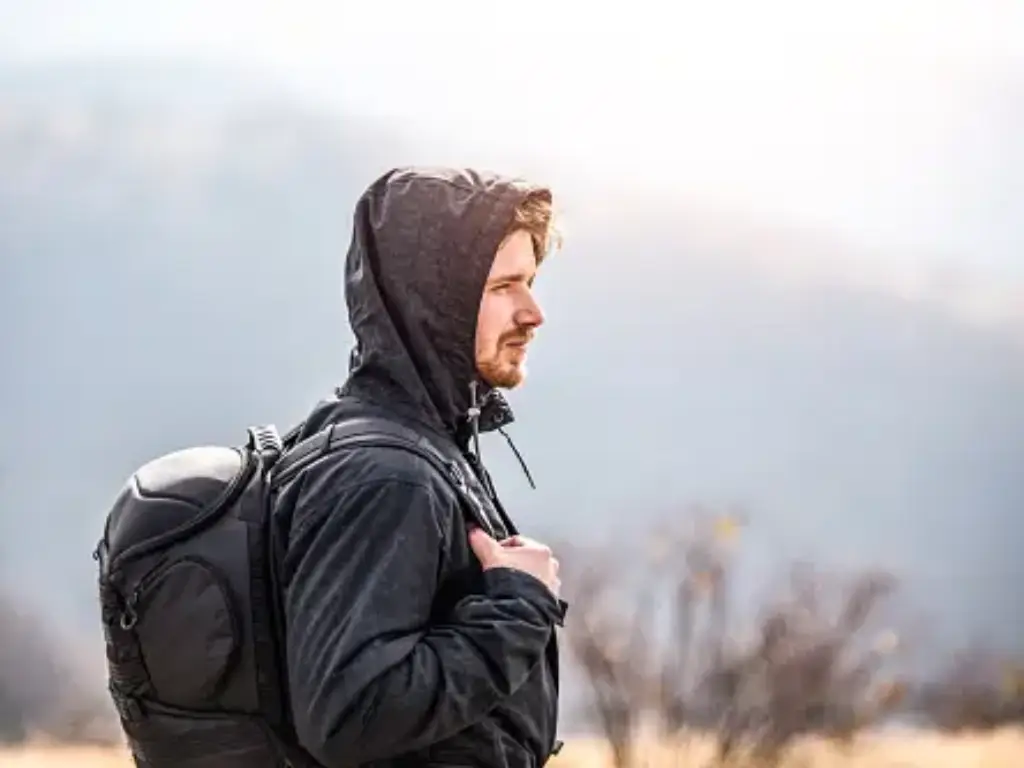
1. Waterproof Jackets
A waterproof jacket is a must-have item for hikers. They shield you from rain, snow showers, and humid weather. Such jackets are mostly made from the waterproof fabrics, which keep breathable at the same time, like Gore-Tex. This kind of fabric allows sweat to go away and at the same time it prevents rain and snow from getting in. Waterproof jackets are ideal for trekking in rainy regions or for long trips where the weather may change suddenly. They are also perfectly suited for the top layer of a layering system, which helps you stay dry and comfortable in harsh weather.
Water-resistant jackets are a first line of defense against the outdoor elements. They are both waterproof and breathable, and this will keep you dry and comfortable. This is important especially when there is heavy downpour. Regardless of whether you are walking in a wet area or handling the unpredictable mountain weather, a waterproof jacket is an important piece of equipment. It makes you feel like you’ve got the weather under control.
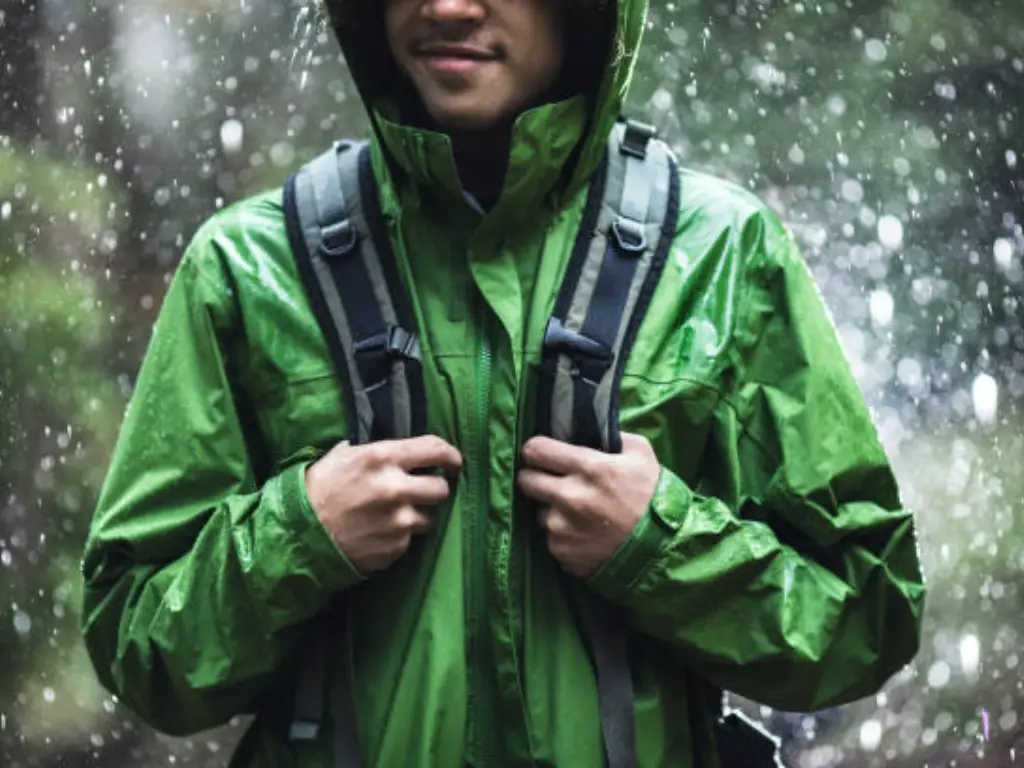
2. Softshell Jackets
Softshell jackets are a practical choice for hikers, as their stretchiness makes them a great option for climbing and their overall comfort makes them popular for everyday wear. This is a good mix for protection from the weather and breathing. These jackets are made from a four-way stretch fabric that is wind and water resistant. Not as waterproof as hardshell ones, they still shield a bit. Softshell jackets are versatile and suitable for all weather conditions, therefore, they are often the choice of hikers in search of a comfortable and adaptive layer.
Sometimes, they serve as a middle jacket in cold weather or as a jacket alone in warmer weather. The fabric’s breathability helps to regulate your body temperature and keeps sweating under control. It maintains your comfort level even when you are engaged in physical activities.
Soft shell jackets are a good compromise between keeping you dry and not letting you to sweat a lot. They are not perfectly waterproof, but they can handle a light rain and keep the wind out. On the one hand, the vents allow you to breathe and cool off, but on the other hand, they prevent you from getting too hot. This characteristic allows them to be an ideal match for weather that can be unpredictable or for activities that are a mixture of physical exertion and exposure to the elements.
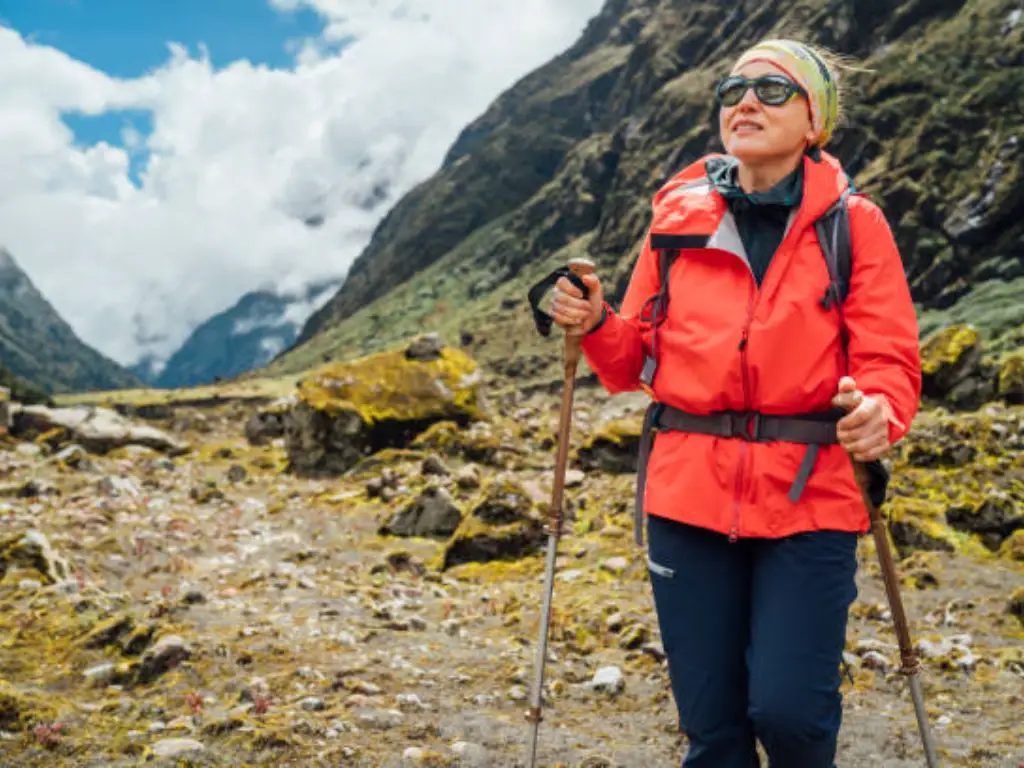
3. Hardshell Jackets
Hardshell jackets are the strongest and most protective choice for hiking. This fabric is both water and breathable. Such jackets are manufactured to have the highest wind, snow, and heavy rain resistance. They are very useful for hikers who are frequently exposed to harsh weather conditions and who are involved in activities such as mountaineering, ice climbing, or winter hiking.
The hardshell jacket, which is the outermost part of the layering system, is the most important component. They are the most effective barrier against the harshest weather elements and at the same time, they allow air to flow through them to help you perspire. These jackets are critical for hikers who need to be in extreme conditions and find their way through the worst weather conditions.
Hardshell jackets are the best choice for you when it comes to remaining dry and warm in adverse weather. They are produced from materials which are permeable and do not let water, wind, or snow make you wet and cold. In the case of hikers who choose to go to extreme environments like the high mountains or Arctic zone they are likely to rely on hard shell jackets. These jackets are the shields of theirs that keep them from the hard factors of nature.
The main difference between hardshell and softshell jackets is their level of protection. Softshell jackets are designed to be used in a wind and breathable weather condition. The former, softshell jackets, strive for high level of waterproofing and wind shielding. Hardshell materials are stronger and more durable, which means that they are usually used for withstanding the worst weather conditions. Softshells are the best option for the medium and light conditions, but you should definitely have a hardshell with you if you are going to face the toughest weather.
| Feature | Softshell Jackets | Hardshell Jackets |
| Material | Stretch fabric, wind and water-resistant | Waterproof, windproof |
| Waterproofing | Water-resistant | Fully waterproof |
| Breathability | High | Moderate |
| Use | Everyday, moderate weather hiking | Extreme weather activities like mountaineering |
| Comfort | Stretchy and comfortable | Durable, less stretchy |
| Weather Suitability | Unpredictable or moderate | Extreme conditions |
| Layering | Middle or outer in mild weather | Outermost in severe weather |
4. Insulated Jackets
Insulated jackets are essential and great hiking clothing for hikers who need to stay warm in cold weather. These jackets contain either down or synthetic insulation, which keeps body heat close and ensures you stay warm. They are perfect for cold-weather hiking and can be worn as a middle layer or as the top layer, depending on the weather.
Down insulation is lightweight and very warm, which makes it a favorite among hikers who carry light gear. Synthetic insulation, on the other hand, works well even when it gets wet. This makes it a trustworthy choice in moist or humid environments.
Insulated jackets are vital for staying warm in winter. You can choose between down for its superior warmth or synthetic for its reliability in damp conditions. These jackets work by trapping your body heat and protecting you from the cold. Depending on how cold it is and how active you are, you can wear an insulated jacket over a base layer or use it as the outermost layer.

5. Fleece Jackets
Fleece jackets are a favorite among hikers because they keep you warm yet are light and let your skin breathe. These jackets are usually made from synthetic materials like polyester. They are especially good at keeping you warm even when they get wet. Fleece jackets are great as a middle layer, with heavyweight fleece offering the most warmth. They work well with other clothes to keep you comfortable in different weather.
These jackets are flexible enough to be worn alone in mild weather or as part of a layering system when it’s colder. Hikers like fleece because it’s tough, dries quickly, and feels soft and comfortable.
Fleece jackets combine good insulation with breathability. This makes them useful for hiking all year round. The synthetic fibers in these jackets trap heat but also let out extra heat and moisture. This prevents you from feeling too damp. You can wear a fleece jacket by itself on cooler days or with other layers when it’s very cold. A fleece jacket keeps you warm and comfortable without being heavy or limiting your movement.
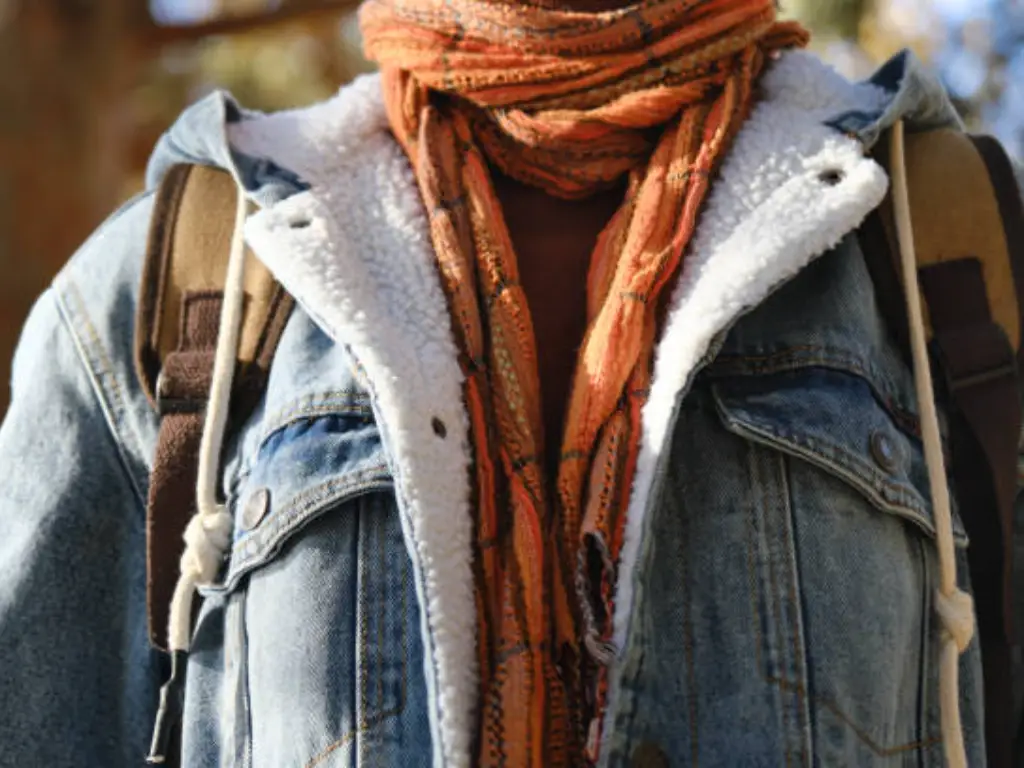
6. Windbreakers
Windbreakers are a light, wind-resistant option for hikers. They are made to block the wind, which helps keep you comfortable during a hike. These jackets are typically crafted from thin yet sturdy fabrics. You can wear them as an outer layer or a middle layer, depending on the weather. They are especially helpful in windy areas, where the wind can cool you down quickly and make you feel cold. Windbreakers add an extra layer of protection without making your hiking gear heavy or bulky.
Windbreakers are often overlooked, but they play a key role in hiking. They protect you from the draining effects of the wind. These light, wind-blocking jackets are crucial for keeping you comfortable and maintaining your body’s warmth in windy conditions on the trail. You can wear a windbreaker by itself or as part of a layering system. It helps shield you from the cold, stopping the fast loss of body heat that can cause tiredness and discomfort.
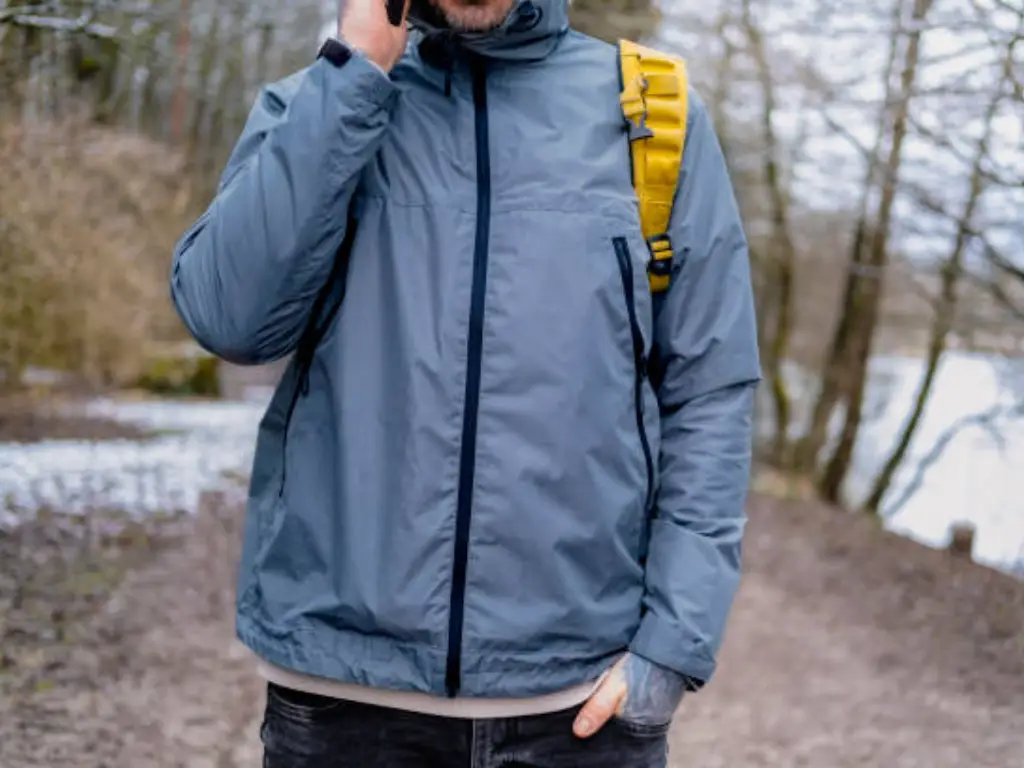
7. Hybrid Jackets
Hybrid jackets are a combination of the most outstanding features from different type of jackets. This is the main feature that makes them the ideal choice for hikers who need a multi-purpose and flexible option. This will give them the flexibility to serve various purposes. They could be made of waterproof, windproof, and insulated materials. Hence, they are not only able to withstand but also be successful in different types of weather. Such hybrid jackets are an ideal choice for hikers who like to wear a single jacket that can be modified to different sorts of outdoor activities and environments.
They are multi-purpose, one-solution for everything. They act as a shield from the elements and at the same time, they keep you warm and comfortable with an optimum amount of air flow around your skin. The hybrid jacket design is more adaptable to the trail environment and can be adjusted to suit different needs. This is the reason why they are a favorite to hikers who love to have the gear that is multipurpose and can be used for multiple functions.
The hybrid jackets are versatile enough to be used in the changing situations of the outdoor environment. They are a mix of the water-repellent characteristics of different jacket types. Such clothing is so versatile that it can endure the toughest weather conditions, for example heavy rain, strong winds, and cold temperatures.
8. Ultralight Jackets
Ultralight jackets are a favorite among hikers who want to keep their gear light. These jackets are designed to be very light and easy to pack. This makes them simple to carry in a backpack or attach to your hiking equipment. They are usually made from thin, breathable materials. However, they often provide limited protection from the weather. This means they are best for mild conditions or as a backup layer.
While ultralight jackets don’t offer as much protection as heavier jackets, they are extremely useful for hikers who need to keep their backpacks light. This is especially important for long hikes or trips that last several days. These jackets add an extra layer of warmth and protection against the wind without making your gear heavy.
For hikers who are careful about weight, ultralight jackets provide a good mix of protection and ease of carrying. They are made from very light materials and can be compressed into a small size. This allows you to easily store them in your pack or clip them to your gear. They are ready to give you extra warmth or protect you from the wind when needed. Although they don’t have the strong weatherproofing of heavier jackets, ultralight jackets can significantly ease the load you carry. This helps you hike without sacrificing safety and comfort.
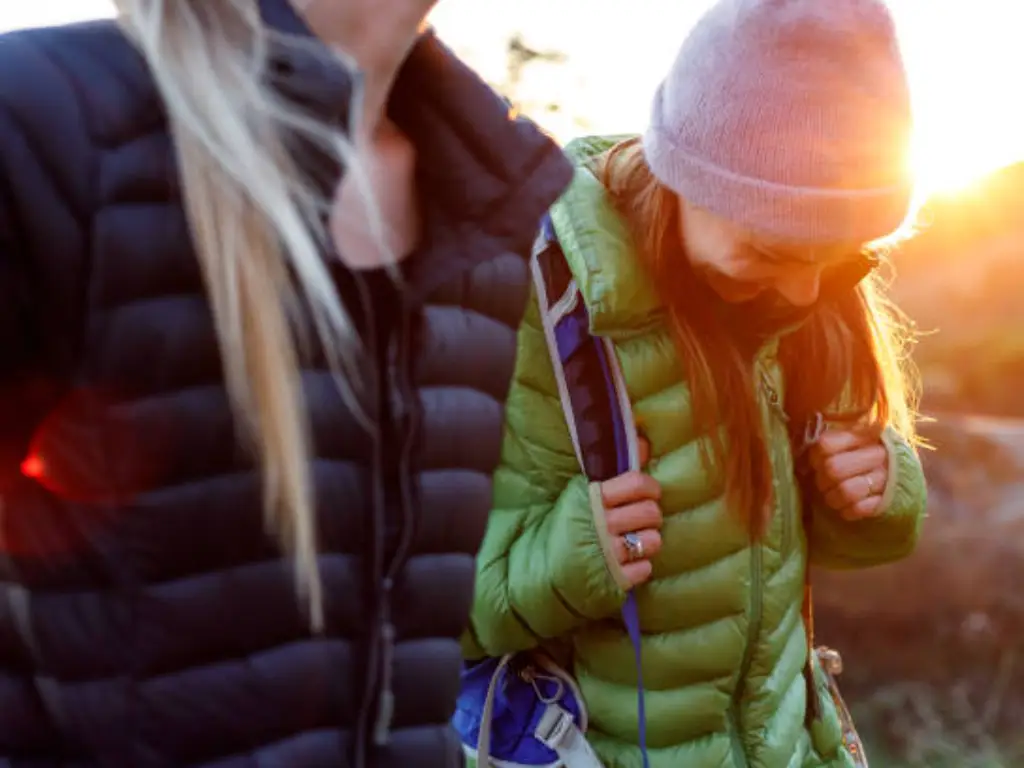
9. Parkas
Parkas are heavy, insulated jackets designed to keep you very warm in extremely cold conditions. These jackets are longer, covering more of your body, and are filled with high-quality down or synthetic insulation. Parkas are a great choice for hikerswho are heading into very cold places like the Arctic or high mountains where temperatures can drop significantly.
The longer length and better insulation of parkas help keep your body heat in and protect you from the severe cold, wind, and snow. Although they are bulkier and heavier than other types of jackets, parkas are crucial for those who need the best protection against cold weather.
Parkas provide the best defense against the intense cold found in the most extreme outdoor settings. They are made with a lot of insulation and cover more of your body. These heavy-duty jackets capture your body heat and protect you from very cold winds, heavy snow, and below-freezing temperatures. For hikers facing the toughest winter conditions, a parka is an essential piece of gear. It offers the warmth and protection needed to stay safe and comfortable despite the harsh elements.

10. 3-in-1 Jackets
3-in-1 jackets are a flexible option that combines several layers into one piece of clothing. These jackets usually have a waterproof, breathable outer shell and a removable, insulated inner layer. This design lets hikers wear the layers separately or together, depending on the weather. This makes 3-in-1 jackets a smart choice for many outdoor activities.
The modular design adds versatility. Hikers can change their layering according to the weather changes during their hike. This is especially helpful when the weather is unpredictable or if temperatures vary greatly in a single trip.
The strength of 3-in-1 jackets is their adaptability. They come with a waterproof outer layer and a removable insulated inner layer. These features allow you to customize the jacket to fit different weather conditions and levels of activity. You can wear the parts separately or together, which ensures comfort and protection against the elements. This flexible design makes 3-in-1 jackets a practical option for adventurers who need one invaluable piece of gear for the unpredictable outdoors.
Don’t Miss: How to Measure Jacket Size?
How do I Choose the Right Hiking Jacket for Needs?
Factors to Consider
The choice of a hiking jacket needs to be thought of carefully, as there are several things to consider. Think of the climate, the possibility of rain and weather conditions you may come across such as wind, cold, or heat. Consider how often you will be moving and the length of the entire hike. The last but not the least important point is your personal preferences for fit, features, and style. Pick a jacket that will be able to withstand the challenges you think you will be facing. Look at the jacket’s weight and the ability to compress it. Add-ons like vents, pockets, or hoods can also be significant for different purposes.
Matching Jackets with Hiking Conditions
It is important to know the various types of hiking jackets and what each one is used for in order to make the right selection. For example, a waterproof hardshell jacket is suited for hiking in wet coastlines. Unlike insulated parkas which are more suitable for winter mountain treks. Opting for a jacket that fits the conditions you predict in advance guarantees your comfort and safety. Thus, you can simply concentrate on enjoying your walk.
Keeping and Caring for Hiking Jackets
So, caring for your hiking jacket is the most important thing to ensure it stays in good shape. Regular cleaning, waterproofing and proper storage of the fabric are key considerations. Follow the instructions for care as provided by the manufacturer to prevent any damage to the jacket. Keep an eye on the jacket at all times for any signs of wear and make sure to mend them as soon as possible. Good maintenance will ensure that your jacket stays in good condition and will continue to serve you well for many years on your travels.
Conclusion
In a nutshell, the different types of hiking jackets available on the market provide hikers with a variety of options to choose from, each having its own exclusive set of features and advantages. Through studying the features of each jacket type and the way in which they meet your hiking activities’ particular needs, you can make an informed choice and be sure that you will be comfortable, protected, and ready for any outdoor adventure. From heavy rain to biting wind, and even extreme cold, there is a hiking jacket that will keep you safe and comfortable while you hike on the trail.
About Fangyuan
Fangyuan, a leading garment maker for the best apparel brands, has been successful in the manufacture of a variety of hiking jackets. They have an in-depth knowledge about the manufacturing process for each type of jacket, which makes them an indispensable partner. Either you are an existing brand or you are thinking about starting your own, Fangyuan has the expert advice and manufacturing support to help you realize your dream with accuracy and quality.
